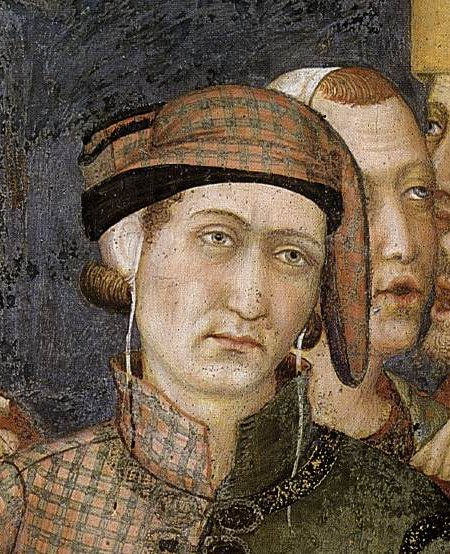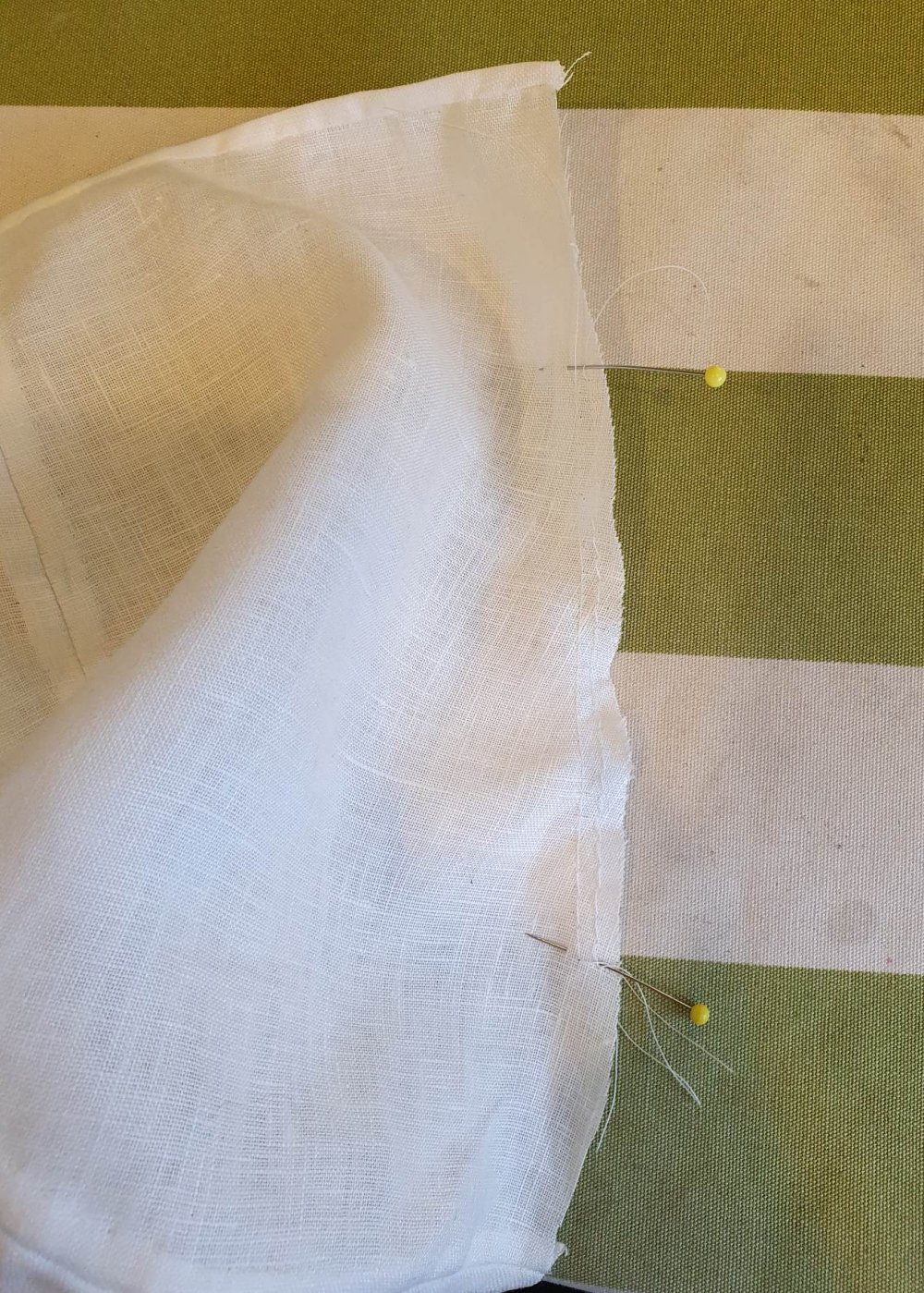Versions of this linen coif was a worn by ordinary men throughout the middle ages and early renaissance across most of western Europe.
This two piece version was worn from the 12th to the 14th centuries. The style changed to a three piece version in the 15th – 16th century, and the coif dropped out of use for everyday wear.

Research and Design
Manuscript images from the 12th and 13th centuries show peasants and middle class men wearing wearing a simple two piece linen coif, either alone or under hats or hoods. The images from the Maciejowski Bible show the cap gathered at the temple, and what looks like a decorative centre seam.
Both the Maciejowski image and the 14th century sculpture from Notre Dame show the cap tied under the chin with a knot – indeed, it is rare to see images where the cap is not tied. By contrast, it is rare to see re-enactors with the tied done up! The sculpture has a much wider band and perhaps represents a leather coif rather than linen.

Source: University of Glasgow Library

Source: The Morgan Library

Photo: Ad Meskens
The 14th century Italian frescoes show a similar style to the Maciejowski manuscript, with the front gathered slightly into a narrow binding (and a rare example of untied strings). The linen coif was still being worn in Italy into the the middle of the 15th century, but had largely disappeared from other countries in western Europe, although still worn by old men and children.

Source: Web Gallery of Art

Source: Steel 1999

Source: Wikimedia
In summary, this style of coif is made in white linen with a centre back seam (plain or insertion), with some gathering along the front edge, with a bound edges and narrow ties, usually as extensions of the front binding.
For this example, I’m doing a 13th century version.
Construction
I mocked up the coif on my headform, making the base the same height as the mouth and the top and sides well clear of the face. Even with pinning tightly over the head, it gapes at the sides, but a small amount of gathering (as seen in several of the images) solves this.
I suggest making a test version in scrap fabric to get the right size. One option is to try it out on a padded headform.


The resulting shape is not what you would expect, but it works when made up. I cut the pieces out of shirtweight linen – two head pieces and a long 20mm straight-grain strip to bind the base and sides.
I sewed the main seam, then fell the seam allowances to each side. I ran a pair of gather threads along the front edge, for about half the length (the 14th century Italian version has more gathering).



I prepared the binding strip by running it though my 12mm bias maker to turn the edges (You can iron it, or skip this step). I sewed the binding strip to the outside of the base, trimming to fit, then turn the binding to enclose the raw edge and sew down inside.
I put the coif on the form and gathered the edge to fit (reducing length by about 2cm). I pinned the long binding strip , leaving the extra at each side for the ties. I sewed on the front binding strip, securing the gathers, then turned and sewed the binding strip to cover the raw edge.



I tested the cap by tying it under the chin with a half knot, then trimmed the ends. I finished the ties by sewing along the length with running stitch, and sewing the ends to prevent fraying.



When worn, there are often ripples down the back – a natural outcome of trying to cover a three dimensional shape. You can see them in the image from the Huntarian Psalter – consider them a feature rather than a bug…
Afterthoughts
Linen coifs are often worn by reenactors out of context – with everything from Viking to Landskneckt clothing! It’s worth checking the right headwear for your time by looking at contemporary art, rather than on what others are wearing.
And if it is the right style for your time period, the correct way to wear it is with the tie done up (as in the vast majority of contemporary artworks), not dangling down in the modern reenactor look!

